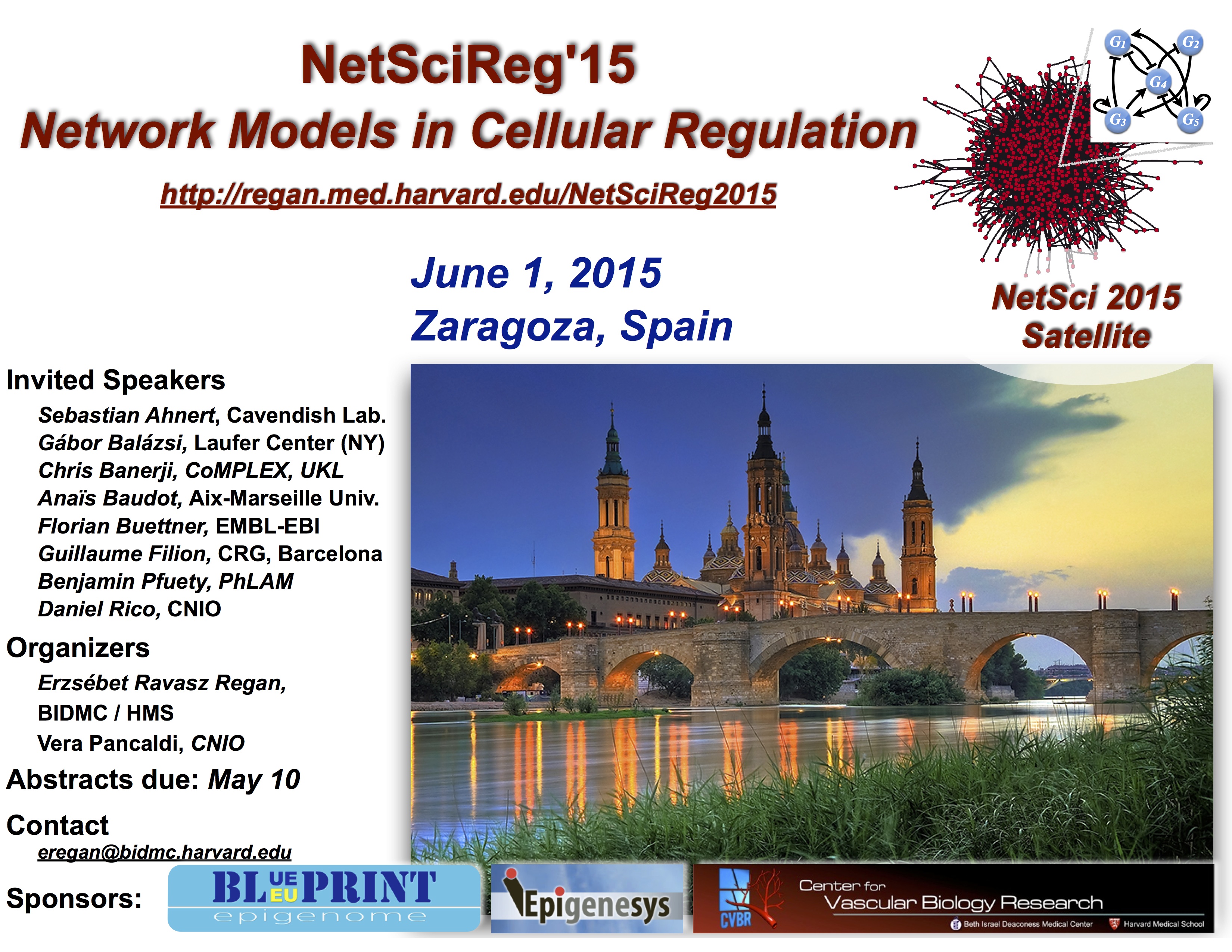NetSciReg'15 - Network Models in Cellular Regulation
June 1, 2015 - Zaragoza, Spain
| Synopsis |
| Program |
| NetSciReg'15 Flyer |
| Important Dates |
| Registration |
| Call for Contributed Talks |
| Logistics |
| NetSci 2015 |
| NetSciReg'14 |
| NetSciReg'13 |
| Sponsors |
|
Time: 6:00 - 6:20 PM
Type: Contributed Talk
Affiliation:
Abstract During development, the execution of distinct cell differentiation programs is accompanied by establishing specific higher-order chromatin arrangements between the genes and their regulatory elements. The Epidermal Differentiation Complex (EDC) locus contains multiple co-regulated genes involved in the epidermal keratinocyte (KC) differentiation. Here we applied a probabilistic approach for the investigation of properties of chromatin architecture. Furthermore, we characterise the high-resolution spatial genomic proximity network of a 5Mb region containing the EDC and its flanking regions in mouse epidermal KCs. This was done by modelling data obtained from the 5C experiments and a set of eighteen ChIP-Seq profiles for histone modifications, chromatin architectural and remodelling proteins. The analysis reveals that a substantial number of the spatial interactions at the EDC overlap with chromatin states involving regulators of gene transcription and chromatin architecture. These include different combinations of transcription factors acting predominantly as a transcription repressors in keratinocyes (Cebpa, Cebpb, Mxi1, Ovol2), co-repressor chromatin remodelers (Sin3a ,Kdm5) and proteins involve in higher order chromatin folding (Ctcf, Rad21,Satb1) We confirmed by using both 5C and 3D FISH that chromatin at the 5Mb genome locus spanning the EDC and its flanking regions form several topologically associated domains (TADs) with similar borders. Moreover, it showed markedly different intra-domain folding in KCs versus thymocytes (TC), e.g. two adjacent TADs at the EDC central part were more condensed and non-randomly folded in KCs versus TCs. In summary, our probabilistic approach allows us to suggest an involvement of the chromatin architecture and remodelling proteins into the spatial interaction network of gene cis-regulatory regions controlling co-ordinated gene expression at the EDC locus. It provides an important platform for further studies of the higher order chromatin folding at KC-specific genomic loci involved in controlling gene expression programmes in skin epithelia in health and disease. |
SPONSORS: |



